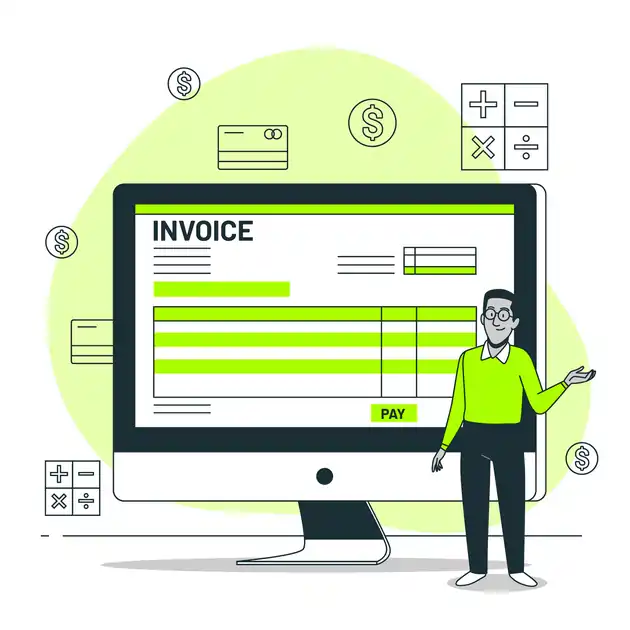
Service Pricing: Unlocking the Balance Between Value and Profit
Service Pricing: Unlocking the Balance Between Value and Profit
Service pricing looks today as a dynamic factor for success for any freelancer and business, big or small. Knowing the value you provide and the profit you seek is essential whether you’re a freelancer, consultant, or service provider. This comprehensive blog will guide you in understanding the fundamentals of value and pricing and how to balance service pricing. It will introduce you to some tools to set appropriate and profitable pricing.
Introduction to Service Pricing: Striking the Perfect Balance between Value and Profit
Service pricing isn’t just about setting a symbolic number. It’s about locating the sweet spot where value meets profit. If you set prices too low, you risk under-price your work and probably run into economic issues. If you put it too high, you may lose clients or fail to attract new ones. Targeting the right balance can guarantee long-term profitability while keeping your clients happy.
What is Service Pricing?
Service pricing refers to rates you fix for the services you offer. In simple terms, it could be anything from freelance work to consulting, business servicing, or specialized coaching. It may be trickier than product pricing, which is based on costs or materials. It is to estimate your value of time, experience, and the benefits you provide to clients.
According to Jane Doe, a freelancer: “Pricing your services is an art. It’s about understanding your value and how to communicate that effectively to your clients.”
Balancing Value and Profit Matters
When you set your service charges, it’s logical to consider both value and profit:
- Value refers to the assistance your clients get from you. How does your expertise improve their business, life, or results?
- Profit is what you get after accounting for your costs and efforts. It’s remarkable for sustaining your services and business and personal goals.
The Long-Term Impact of Underpricing
Setting your rates too low might seem like an effective way to catch clients, but it can lead to:
- Burnout: Working long hours for minimal pay.
- Low perceived value: Clients may only value your services if they’re high.
- Financial instability: Struggling to cover expenses and grow your business.
On the other hand, setting your rates too high can result in:
- Client loss: Clients may seek other alternatives.
- Inconsistent income: Fewer clients might mean unreliable revenue.
- Reputation issues: Overpricing can make you appear out of touch with industry standards.
Finding the right balance ensures your clients get value while you achieve financial success.
How Does Service Pricing Differ from Product Pricing?
Service pricing differs from product pricing based on your skills, expertise, and time. Here’s a simple comparison between service pricing and product pricing:
Aspect Service Pricing Product Pricing
Costs Based on time, expertise, and skills Based on raw materials, production
Flexibility More flexible; can change with each client Generally fixed, with fewer variations.
Value Perception is highly subjective; it depends on the client’s perception of Tangible based on the product’s features.
Profit Margins Can vary widely and are often predictable.
Understanding the Core Elements of Service Pricing
It is essential to understand the core elements for pricing your services effectively. Various factors contribute to setting an appropriate price for you and your client. Here’s a breakdown of different elements for building a foundation for pricing your services.
What Factors Influence Your Service Pricing?
There are several factors that you must keep in mind when setting your service price. These consisted of time, expertise, demand, and other costs. Here is the detail:
- Time and Effort Required
- Time is money when it comes to service pricing. Analyze how much time the task will take.
- Break down the task into different milestones.
- Example: If you’re a content writer, pricing should include the writing itself and time spent with the client and making revisions.
- Level of Expertise
- Skills and experience play a critical role in determining the service pricing. More skill and experience should result in more pricing.
- Many clients especially expect more payment for experts in a particular field because of the higher value they provide.
- Example: A beginner content writer may charge $30 per article, while a highly experienced writer may charge $500 or more for the same task.
- Market Demand and Competition
- Considering the demand for your services in the market is notable. You can set higher prices if your services are in high demand in a particular field and few others offer them.
- Inversely, suppose the market is filled with competitors. In that case, you may need to set competitive pricing while highlighting the unique value you bring.
- Tip: Use tools like Google Trends or Ahrefs to research demand for specific services in your field.
- Industry Standards
- Knowing what others in your field are charging for similar services is vital. Industry benchmarks can guide your pricing and help you avoid undercharging or overcharging.
- Example: If most service providers in your field set between $100 and $200 per hour, pricing yourself remarkably higher or lower can influence client expectations.
- Your Business Costs
- It would help if you also considered the operational costs of providing your services. This includes everything from office space to paid software (if applicable).
- These costs must be included in your service pricing to ensure you cover your expenses and still make a profit.
- Tip: Create a budget that lists all your expenses to calculate how much you need to charge.
How Do Market Trends Affect Service Pricing?
Market trends have a significant effect on service pricing. Staying connected with market trends can help you set prices and remain competitive. Here’s some detail:
1. Economic Conditions
- Clients may be more willing to pay for services during a strong economy. This can allow you to charge higher rates.
- In contrast, many businesses cut back on spending during an economic downturn.
2. Technological Advances
- New technologies and tools can enhance demand for your services, automate certain tasks, and decrease your time spent.
- Example: The rise of automated design platforms may allow a graphic designer to offer speedy services at a low rate.
- 3. Industry-Specific Changes: staying on top of trends and innovations is critical in a fast-moving industry (like digital marketing or IT).
- Tip: Continuously update your skillset to be relevant and keep on offering high-value services.
What Role Does Customer Perception Play in Pricing?
One of the most powerful elements in determining the price is customer perception. How your clients perceive your skills, reputation, and the value of your service will significantly enhance their willingness to pay.
1. Value Perception
- Clients don’t always pay based on the actual value of the service but rather on how valuable they perceive it to be. This means your pricing should reflect not just the cost of your time and resources but the outcome and benefits your service provides.
2. Brand Reputation
- A strong brand reputation can remarkably influence higher prices. Clients can pay special charges if they trust your brand or if you have a history of delivering exceptional services.
- How to Build Perception:
- Testimonials: Showcase client success stories and reviews.
- Case Studies: Demonstrate your past results with detailed case studies.
- Portfolio: Display your best work to show the value of your expertise.
3. Emotional Connection
- It can also influence client’s perception of your prices, how you connect with your clients emotionally. If you offer your services as providing peace of mind, convenience, or security, clients may be willing to pay more for these emotional benefits.
- Summary of Key Factors Influencing Service Pricing:
Factor Description
Time and Effort: The amount of time and work required to deliver the service
Expertise: The level of skill and experience you bring to the table
Market Demand: How much demand there is for your service in the marketplace
Industry Standards Common pricing practices within your industry
Business Costs Overhead and operational costs you need to cover
Customer Perception: How clients perceive the value, brand, and results of your service
Standard Pricing Models for Services
Right pricing model for your services can significantly influence your business’s profitability, client relationships, and overall success. The pricing model you choose will depend on factors such as the nature of your services, your industry, and your target audience. Here are most common pricing models for services, including their advantages, disadvantages, and when each model works best.
1. Hourly Pricing Model
This is one of the most commonly used methods for service-based businesses. Under this model, clients are charged based on the number of hours worked on their project or task.
Advantages of the Hourly Pricing Model
- Transparency: It creates a sense of openness and trust between you and your client. Clients may quickly know how much time is being spent on their projects.
- Flexibility: This model allows for easy adjustments based on the time spent and the project’s scope.
- Easy to Implement: Calculating your rate is straightforward — you simply multiply your hourly rate by the hours worked.
Disadvantages of Hourly Pricing
- Income Limitation: Your working hours are capped by the number of hours you work. This may limit your income.
- Client Concerns: Clients may have concerns about their efficient use of time for working. They may question higher time estimates.
- Discourages Efficiency: Since you’re paid based on time and you have no time fixation to complete the task, so there may be little incentive to complete tasks quickly or more efficiently.
When to Use Hourly Pricing
- Projects with Unclear Scope: Hourly pricing may be a better choice if the scope of a project may change or is challenging to define upfront.
- Short-Term or One-Off Projects: An hourly rate can simplify the billing process for small and quick tasks.
2. Project-Based Pricing Model
With project-based pricing (or flat-rate pricing), you charge a fixed fee for the entire project, regardless of the time or resources involved. This model is popular in creative industries where the deliverables are clearly defined.
Advantages of Project-Based Pricing
- Predictable Costs: Most of the clients like the certainty of knowing how much a project will cost from the start.
- Potential for Higher Profit Margins: If you complete the project faster than expected, your hourly rate may increase.
- Motivates Efficiency: Since the price is fixed, you are incentivized to complete the work efficiently without sacrificing quality.
Disadvantages of Project-Based Pricing
- Risk of Underestimation: If you don’t calculate the time and effort required, you may end up earning less than expected.
- Scope Creep: Clients may request additional work, pushing the project beyond its initial scope without clear boundaries.
When to Use Project-Based Pricing
- Clearly Defined Projects: Use this model when the scope of work, deliverables, and deadlines are well-defined.
- Creative and Technical Services: This model works well for services with tangible deliverables, such as graphic design, web development, and video production.
3. Retainer Pricing Model
A retainer pricing model refers to recurring revenue and involves charging clients a recurring fee monthly, quarterly, or so on. Retainers are commonly used in industries like marketing, consulting, IT support, and legal services, where clients require continuous service over time.
Advantages of Retainer Pricing
- Stable Income: Retainers provide a consistent and predictable income stream, which is especially valuable for freelancers.
- Stronger Client Relationships: With a retainer, you develop long-term association with clients, leading to better understanding of their needs and more effective service delivery.
- Work Flexibility: Retainer agreements specially offer flexibility regarding the scope of work, as long as the overall time commitment or deliverables align with the agreed-upon terms.
Disadvantages of Retainer Pricing
- Client Dependency: If a client decides to end the agreement, relying on a few clients can be risky.
- Scope Challenges: Managing the scope of work can be tricky if the client expects more services than initially agreed upon.
When to Use Retainer Pricing
- Ongoing Services: This model should be used when clients need continuous services over an extended period, such as in marketing, consulting, or maintenance services.
- Relationship-Driven Services: Retainers work well for services where trust and long-term collaboration are vital.
4. Value-Based Pricing Model
Value-based pricing is a most commonly used model where you fix your charges based on the value or results you provide to the client. It is not the matter of time spent on the specific deliverables.
Advantages of Value-Based Pricing
- Potential for High Profits: If your work delivers substantial value, you can charge a premium price that reflects the impact of your services.
- Client-Focused: This model aligns your pricing with the client’s goals and outcomes, making it more appealing to business solutions.
- Rewards Expertise: Expert professionals who continuously deliver results can choose this model to charge higher fees.
Disadvantages of Value-Based Pricing
- Challenging to Implement: Understanding the vital value of your services and convincing clients to agree to value-based pricing can be challenging.
- Risk of Unrealistic Expectations: Clients may expect speedy or large-scale results, even if your work influences the overall outcome.
When to Use Value-Based Pricing
- High-Impact Services: This model is ideal for services where the client observes much weightage to sales consulting, business development, or conversion rate optimization.
- Experienced Professionals: If you have a track record of delivering significant value, this model can work in your favor.
5. Package or Bundled Pricing Model
Package pricing refers to offering services at a set price. This model works well for businesses that provide multiple services, and it can help simplify decision-making for clients by offering them clear options.
Advantages of Package Pricing
- Clear Value Proposition: Bundle services together to help clients see the value of multiple offerings at once.
- Upsell Opportunities: Packages can be designed with tiered options, encouraging clients to upgrade to a higher level of service.
- Simplifies Choices: Clients don’t have to worry about choosing individual services — they get a set of solutions that meet their needs.
Disadvantages of Package Pricing
- Potential for Undervaluing Services: Bundle services together may be easy to price the package too low, reducing potential profit margins.
- Complexity in Customization: Some clients may want specific services from different packages, leading to more negotiation and customization.
When to Use Package Pricing
- Multi-Service Businesses: This model works best for businesses offering multiple related services, such as digital marketing (SEO, content creation, social media management), IT services, or event planning.
- Clients Seeking Simplicity: Clients who prefer comprehensive solutions are often drawn to package pricing.
Comparison Table of Pricing Models
Pricing Model Best For Advantages Disadvantages
Hourly Pricing Flexible, short-term projects Transparent and easy to calculate Limits income, discourages efficiency.
Project-Based Pricing Defined projects with clear deliverables and Predictable costs, encourage efficiency Risk of underestimating time and effort.
Retainer Pricing Ongoing services with recurring needs Stable income, strong client relationships Scope management can be complex.
Value-Based Pricing High-impact, ROI-driven services High profits, client-focused Difficult to implement and justify
Package pricing, multiple related services, clear value, upsell opportunities, and risk of undervaluing bundled services.
Choosing the Right Pricing Model
Choosing the right pricing model depends on the type of your services, the scope of work, and the value you bring to your clients. Whatever the model you opt, the ultimate goal is to align your model with both your business goals and your clients’ needs. By grasping the pros and cons of each pricing model, you can make better decisions that balance value and profit.
Conclusion
Striking the right balance between value and profit in service pricing is a continuous process. By implementing the strategies discussed, you can develop a pricing model that not only represents the worth of your services but also fosters solid and long-lasting associations with your clients.
Ultimately, your goal should be to deliver exceptional value to keep your business profitable and sustainable. With a solid understanding of your market, a commitment to quality, and a willingness to adapt, you can unlock the balance between value and profit in service pricing. This concludes the post on Service Pricing: Unlocking the Balance between Value and Profit.
Read More
- How To Build Income Stream with Recurring Revenues (2025)
- Imagen AI: Your Superpower for Stunning Photos (Even If You’re a Beginner!)
- Everything You Need to Know About Octane AI (2024)
- How Can I Use ChatGPT: Step-by-Step Guide to Launch OpenAI’s ChatGPT
- Transform Your Legal Drafting with Spellbook AI
- The Ultimate Guide to AI Operating Systems: Revolutionizing Tech 2024


